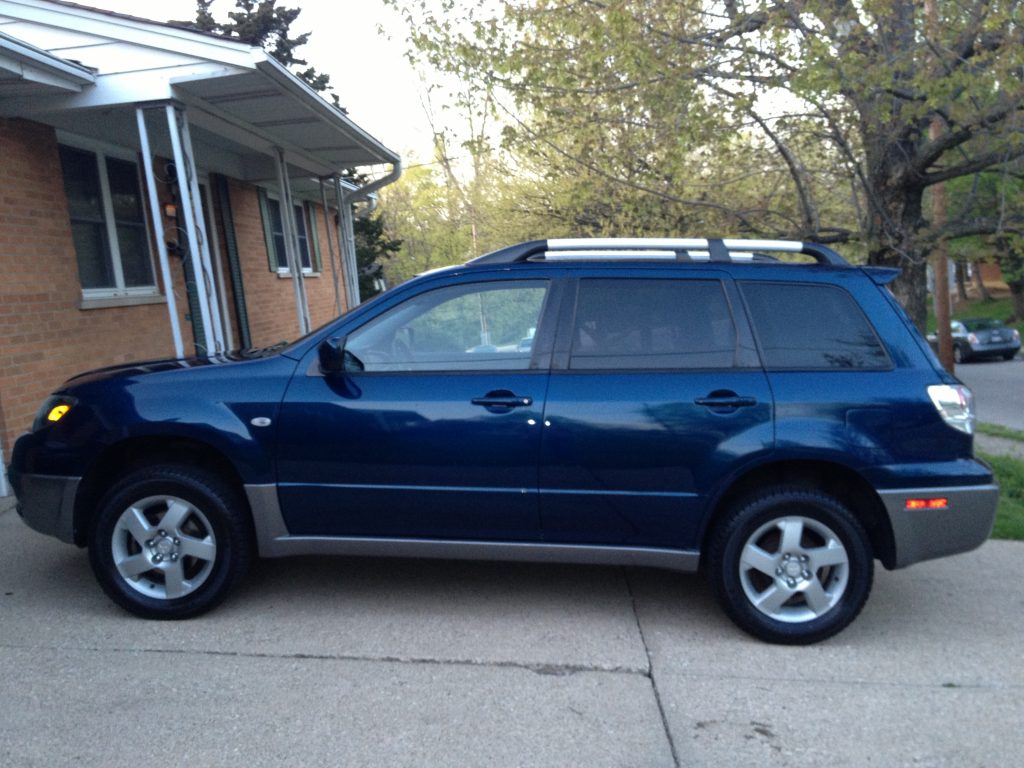Disclosure: I sometimes earn products or commissions from affiliate links or partnerships on my blog. I only recommend products and services I trust to serve you. Learn more.
Living well and saving money, even on a teacher’s salary, isn’t impossible if you know how to spend your money well. In this post, I’ll show you how WE live on half our income and save the other half for our building project.
Update: This post applied to our budget BEFORE I decided to quit my job. We are still aggressive savers even on one income. I’ll post an updated one income version of this post soon.
I’ve been getting some questions lately from friends and readers about HOW we’re managing to finance our homestead building project on the dreaded TEACHER SALARY.

I am a part-time music educator. I absolutely love the flexibility of my job, the people I work with, and the students I get to teach every day, but being part time in a Catholic school means that my income is pretty low compared to most people. Even when I was full time my salary was still well below that of my public school colleagues, and that’s okay with me. I love where I am and wouldn’t trade it for the world!
Mark is also a music educator, but at a small Catholic university.
In order to finance our homestead, we had to take a hard look at how we spend our money and how we wanted to allocate it to achieve our dreams.
Our Goal: Live on half of our income and use the other half for the build.
So how do we do it? Do we live without any luxuries at all? Live on rice and beans? Hardly. What are the magic bullets to living on half your income?
-
Not carrying debt
-
Making frugal choices
-
Focusing on your goals
We took the time to brainstorm our ultimate goals and looked at what we could do to get there. We were already pretty good at stretching a dollar, so it didn’t take long to adapt. Being on the same page is the biggest help though. This form is a much prettier version of what we wrote out together when we were first figuring out if this was even going to be possible.
Click HERE to download the FREE BUDGET AND GOAL-SETTING PRINTABLE WORKSHEET!
Budget Points
- Located in the midwest/south = lower cost of living
- Health, dental, and retirement savings taken out of gross by employers
- Paychecks automatically deposited by employers, savings automatically transferred to savings accounts
- We live on half of our net remainder and use the other half to pay cash for building materials and services.
HOW WE REDUCED OUR COST OF LIVING
1. Lower housing costs
We purchased a parcel of land that not only fit our homesteading needs, but that fit our budget as well. To fit our budget though, there are some aspects of the property that might have been deal-breakers for other people (i.e. the driveway is a half a mile long and it runs as an easement through two other parcels before you can even get to ours). When weighing our options, however, this property had far too many great things going for it with how it met our homesteading needs, so we made the compromise.
In order to be able to keep our housing costs down, we opted to live with my mom while we build. Other people have opted to live in travel trailers on their property, others to live in tiny homes, and others have enough money to be able to rent a normal apartment/house and be comfortable.
Living with my mom has been a blessing because we’ve been able to help each other out both financially and logistically. We pay her a “rent” that goes towards predetermined spending items. Would this setup work for everyone? Absolutely not, but it works for us.
Land and “Rent” Total: $715
$715 is slightly less than what we used to pay to rent a 2 bed 1 bath house just a few miles up the road from here and is on the lower end of the rent spectrum in our area.
2. Ditch the pricey cell phone plan.
We used to pay $180 a month to AT&T for half the cell plan we have now. We switched to Cricket Wireless in January 2015 and paid $7o for two lines with 4 GB of data each (as of August 2017). Later when my mom’s contract was up, we added her AND my stepdad to our plan as another form of “rent” and now pay $100 for 4 lines. FOUR LINES. And yes, it is $100 even, all taxes and fees included in the price. It’s so straightforward and our user experience has been so flawless that even though I now have to pay for phones outright it’s hard to imagine wanting to go back to one of the major carriers.
Other budget-savvy people use similar mobile resellers like Ting or Republic Wireless, but for our needs Cricket has been perfect.
3. Don’t finance — buy with cash instead.
Aside from our land loan, we don’t carry debt. We haven’t used a credit card since 2012, have been debt-free since 2013, and make all of our big purchases with straight-up CASH.
I bought my car in 2013 with ACTUAL GREEN DOLLAR BILLS THAT I LITERALLY WAVED IN FRONT OF THE SALESMAN.

Paid cash and drove her home. No stressful financing involved!
And you know what? It gave me negotiating power. When I threatened to walk out of the dealership, they came down to my price. We did the same thing when we bought Mark’s truck.
When we replaced our sewer line at our old house, we asked for a cash discount and saved a few hundred dollars.
Financing takes away the power you have over your money and gives it to someone else. Dragging around a payment is one of the biggest burdens you can place on yourself financially, so we avoid it. We drive older vehicles and save up for the things we want. If we run out of money in the House Account, guess what? We’ll wait until we save up enough to continue on with whatever part of the project we were on. We won’t run out and get a loan to pay for it when we can just as easily wait.
4. Know your NEEDS vs. your WANTS.
You don’t NEED cable, you WANT cable. You don’t NEED a brand new cell phone, you WANT a new cell phone. You don’t NEED a latte everyday, or even every few days, you WANT one. We watch over-the-air TV, use the library, and scout out deals for the things we truly need. If it’s a want? We can save up for that and take time to decide if it’s actually worth the cost or not. And that’s not to say you have to cut out all luxuries. We still have Netflix, but we’ve done that for years in lieu of cable. You simply have to assess what you need and want, then find a balance that fits your budget.
$30 can buy a nice dinner for two. OR it can buy a bunch of PVC pipe fittings for our drainage system. Which one gets us closer to our goal?
5. If you have a partner or spouse, be on the same page with them about money.
If you have a partner or spouse, money is a joint responsibility. There are things you NEED to do together to make sure you’re both on the same page about how the money for your household is earned, allocated, and spent. You need to talk to each other regularly about it. I don’t care if it makes you uncomfortable. Just do it, or you’re never going to reach your goals.
Budget Highlights
Land and Housing – $715
Food and Personal Items – $300 (for 4 adults and one picky kid, including groceries and eating out)
Insurances (car and life) – $130
Gas/Transportation – $200
Child Care (can vary lower) – $640
Cell Phones – $100
Netflix – $10 (rounded up)
*NOTE: These are some of OUR budget numbers, and are only intended to give you a rough idea of how we allocate our funds. Your numbers will vary depending on where you live, the options available to you, and your own personal tastes/choices. This also does not take into account charitable giving or additional savings from our workplace retirement/pensions.
That being said, living on half of your income can absolutely be done IF you make that choice. It took us a long time to get to the point where we could have a savings rate of over 50%. The keys that led us to live on half are having NO DEBT and MAKING FRUGAL CHOICES.
Your own budget will certainly be quite different from ours, but I hope that seeing ours gives you some insight into how it is possible to live well and save for your dreams without breaking the bank.
If you are looking to give your budget a makeover and save more for your dreams, I invite you download this free Budget and Goal Setting Worksheet. It is a much more elegant version of how WE brainstormed our way into taking real action, and I hope it will help you on your path to self-reliance!
If you’re just joining us, check out our cordwood homestead specs here! There are lots more posts about our journey with building our cordwood home here too.
And of course, be sure to join the party on Facebook, Twitter, Instagram, and Pinterest! We’d love to have you join us.
Thanks for reading!

I love, love, love what you guys are doing. Like you, my husband and I lived on one income while we were both working and used that money to pay off our college debt and save for a house. Like you, we’re both musicians and teachers. Some differences- we bought a house conventionally with a mortgage, and while it’s a relatively small one, we still have to pay it off. And while I work part time teaching privately, we have three kids and only make about $2400/month total. SO. Now the challenge is to do what we love, try to cut back even more on our financial output, see if we can make a little more, and just keep saving. 🙂 Thanks for the daily inspiration!
Thanks for the kind words! The amount we’re making now is positively lavish compared to how we started. Our first year married we made about $1200 a month! Never had assistance and while it was always tight we had the best of times. It helped shape us for our long term success. Good luck to you and your precious family!
I love this!!! We are in the beginning of our debt paying off and I am excited to get it done. Your whole blog has been so inspiring! I have to admit I’ve binge read a good chunk of it just tonight.
Wow! Thanks so much! Good luck to you on knocking out your debt!
Thank you so much for sharing this info!! My husband and I are lucky enough to live with his parents with our 8 month old while he begins his teaching career and we pay off our debts. We REALLY want to build a house in a few years and your blog is an excellent source of inspiration <3
Thank you!
No problem! Thanks for the kind words!
I just 100% love this article! I’m also venturing out on the path of building up my own homestead and am looking into ways that I can save even more money to hopefully get there faster.
I used to live cheaper than I do now some years ago and I really want to get back to that again to really reach my long-term goals.
I also found your article on what to look for in a homesteading property really useful. I’ll add your list to my Permaculture requirements to get closer to a proper fit.
Great to hear it! I hope some of the information here will help you reach your goals. Good luck!
I really liked your article and I am anxious to know more about how you live on a reduced income. One of our challenges that we have not been able to figure out is what to do about health insurance if I worked part-time. I have worked more than one job most of my life but my body is now fighting back with some serious illnesses. I feel if I worked part-time, maybe I could heal. I am looking forward to reading more.
Health insurance is such a loaded issue, that’s for sure. One of the options we’re looking into for the day my husband no longer has insurance from work is a healthshare like Liberty, Samaritan, or Christian Healthcare Ministries. I have several friends who have used plans like this over the years with great success, but otherwise don’t have any direct experience. I wish you luck!
We are just talking about a piece of land up north near family. We’re now currently a zero income household due to my husband losing his job from covid. Hes applied for a few job and hopes he gets something before he sees unemployment as we can’t qualify for the land loan to buy with no job. The area we live in it’s $1700+ for a 3 bedroom apartment, on the not so good side of the city.We had to get a house in order for my husband to turn the garage into a work shop to eliminate having to pay commerical rent. So we are a family of 7 living in $2000 rental that isnt checking all of the boxes. I Have been trying to figure out how to save more and the reality is moving to the midwest. We have a tiny trailer we are going to squeeze into and then build as we go. We aren’t around to have the trailer and the home on one parcel so we have to rent land for the trailer. This post has helped me know that it is possible.